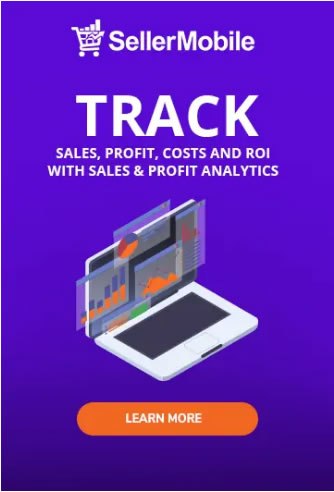A crucial aspect of running a business (that many sellers avoid) is inventory management. E-commerce businesses that fail often do so because of poor forecasting and restock plans. And with lead time and cost of shipping increases over the past few years, the margin for error now is slimmer than ever. Here we’ll cover the basics of restock forecasting as well as options for automating your inventory management. Though managing inventory seems like a daunting task, you can stay on top of your business and increase profitability by following a few simple best practices.
What is Forecasting?
In the ideal scenario, you’d sell through your current inventory each month, timing your restocks so that you’re never out of product and also never overstocked. It’s a delicate dance, which is why forecasting is so essential.
What is forecasting? When you forecast, you anticipate your needs and time your restocks accordingly. If all goes well, you avoid unnecessary storage fees as well as search rank penalties for running out of stock. In essence, forecasting is looking at past demand and then planning restocks so that new product arrives the moment old product sells out. Many Amazon sellers make forecasts based on guesswork, however, which runs the risk of costly fees or search rank demotion.
Why is Forecasting Important?
There are a number of reasons why proper forecasting is essential to running a successful business. First and foremost, forecasting helps increase profitability. If you run out of inventory too soon, you’re naturally going to lose out on continued sales. On the other hand, too much inventory means that overstock fees take a bite out of your bottom line. Furthermore, Amazon has started tracking which sellers manage inventory efficiently and which don’t—sloppy forecasting will move your listings further down in search results.
Unfortunately, poor inventory management can turn into a vicious cycle. After repeat stockouts, Amazon will introduce a penalty in the form of a lower restock limit. This makes it even harder for you to keep products in stock in the future. Overstocking is just as bad: not only will you take on hefty storage fees, but you’ll also have less capital to put toward products that do sell.
Finally, sloppy forecasting affects your ability to sell your business later on down the line. Potential buyers will look at your profits and then make an offer based on an extrapolation of those profits. Even a small reduction in profitability because of inventory issues can make a significant difference in what kinds of offers you receive. Enforcing good habits now means you’ll walk away with more once you’re ready to move on from your business.
Forecasting Different Types of Products
One of the major pitfalls sellers run into when making forecasts is treating all of their products equally. If you simply repeat past restocking behaviors or apply them to different products, you’re almost guaranteed to lose out on profits. New products, seasonal products, products sharing the Buy Box and more all have unique features that influence how you should plan your restocks.
New Products
New products are one of the trickiest items to forecast, since you don’t have past data on which to base your projections. A helpful trick is to look at the monthly sales volume of similar products, then determine what percentage of those sales you expect to take over.
Many sellers use a 50% rule-of-thumb when making these calculations. So if the top seller moves 3,000 units in 30 days, you can reasonably expect a new launch to sell roughly 1,500 units in that same time frame. Then as long as you have 50 units per day of your launch, you’re good to go.
Seasonal Products
Products like decorations fluctuate in their demand depending on the time of year, which makes them another difficult product to forecast. Generally speaking, you’ll want to use the previous year’s data and add custom variations for set times of year. For instance, you might double your expected sales in the months between Black Friday and the end of December. You could also add sales spikes on Cyber Monday or on days when you’re planning Lightning Deals.
Sharing the Buy Box
Sharing the Buy Box is another precarious forecasting scenario, as these sales are less steady and therefore harder to predict. Lead times for these products are shorter as well, usually only between one and two weeks. When sharing the Buy Box then, you’ll want to narrow the time frame of your forecasts to improve accuracy. Forecasting over a 7 or 14-day period will help avoid both stockouts and overstocking.
As you can see, forecasting gets complicated! For steady, established products it’s as simple as looking at year-to-date or 90-day trends–but you likely have many different kinds of products to manage. That’s why we’ll go over options for automating your forecasts later. For now, we’ll move on to how forecasting works for Amazon sellers specifically.
Forecasting and Amazon
Restock Limits and the Supply Chain
As we all now know, global events can put undue pressure on supply chains and leave e-commerce sellers in a pinch. That’s why it’s a good idea to add “buffer stock” to your forecasts as a cushion, such as 30 days of extra stock you try not to touch.
Still, Amazon recently introduced universal restock limits that prevent sellers from sending in as much inventory as they want without constraint. It’s more important than ever then, for sellers to know how to accurately measure their inventory levels.
Taking Stock
At first, measuring inventory sounds like a simple affair. Just look up your available inventory on Seller Central—right? Unfortunately, there are so many moving pieces when it comes to e-commerce that staying ahead of your restocks isn’t so easy.
To get the right inventory count out on Amazon specifically, you’ll need to combine the Available Inventory value with a handful of other values. First, subtract Customer Orders from your Reserved Inventory. Then add any Inbound FBA Shipments that haven’t yet made it to Amazon. When taken together with your Available Inventory, the result will give you a sense of how much product is connected to the site.
But wait! You’re not done yet. You’ll also need to account for Purchase Orders in production or on the way to a 3rd-party warehouse, as well as whatever is already inside the 3rd-party warehouse itself. With this final value in hand, you’ll be ready to start making your forecasts.
Best Practices for Manual Forecasts
A good forecast takes into consideration historical sales data, supplier lead times and order frequency. You can grab your historical sales data from your Amazon sales reports or directly from an e-commerce software service. Just make sure you don’t overlook any sales spikes or stockouts that could have thrown the numbers off. For supplier lead times, you’ll need to get in touch with your suppliers and freight forwarders to find out how long your products take to manufacture and ship (the more often you get in touch with them, the better).
Determining the last piece, order frequency, requires a bit more finesse. Luckily there’s a technique known as Min/Max Restocking that can help. With Min/Max Restocking, you set a range of inventory that you always stay within. So if your minimum is 30 days’ worth of inventory and your maximum is 90 days’ worth, then you’ll get alerts every 30 days to remind you to replenish your stock up to 90 days’ worth of inventory. If your lead time is 10 days, you’ll be prompted to transfer at least 40 days before you run out of stock.
Last but not least, always make sure to communicate your forecasts to your marketing and accounting teams (if you have them). You’ll want to make sure you’re ready for any increased sales due to promotions, and that you have enough cash on hand to afford the orders you want to place.
Using Automated Forecasts
Due to the complexities involved in forecasting and inventory management, many sellers have turned to software services to automate their systems. Not only does automation eliminate the guesswork (and headache!) of tracking so many variables, but it can also provide alerts at the right time, giving you one less plate to spin as a business owner.
SellerMobile’s new forecast algorithm, for example, automatically anticipates demand and provides restock suggestions based on the data from your Seller Central account. On the SellerMobile dashboard, you’ll see how inventory levels are affecting sales and receive notifications when sales don’t line up with a particular forecast. You can even customize supplier lead times for different seasons as well as create purchase orders and FBA restock plans in only a few clicks. The software also uses analytics from multiple marketplaces to offer data-driven recommendations on how to boost your IPI score.
Using the best practices outlined above, as well as an automated system like SellerMobile, you should have everything you need to stay on top of your inventory and maximize profits. Good luck!





